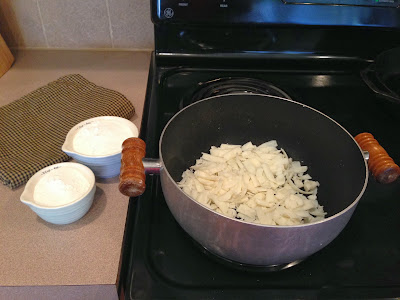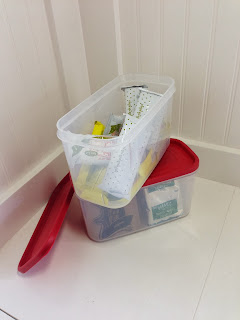When Toni Philbrick, owner of the beautiful hooking, penny rug, and antique studio,
The Keeping Room in Hampden, Maine (just outside of Bangor) invited me to be a vendor at her annual fall hook-in, I was delighted. Toni is a wonderful person, a magnificent artist, and a great teacher of her crafts. In addition, her shop is on the site where Hannibal Hamlin, first VP to President Lincoln, had his law office. Hannibal Hamlin's birthplace is in my village of Paris Hill, over 100 miles away, so I was interested to see where his law office had been, and checked that out on the way. This event, however, was held about a mile or so away from the shop, in the gathering hall of the community's Methodist Church. I had a great day there, met some of the women who will be coming to our own Paris Hill Hook-In on October 19th, and made some great connections and - wow! - great sales. What follows are some photos from this event.
There were three vendors of wooly goodies at this event. This is Toni's table, from her shop, The Keeping Room. I was very tempted by her penny rug kits, and may yet call her up and order one.
This is the table of
Wool N Ewe from Ellsworth, Maine. I met owner Al Jenkins for the first time, which was a pleasure. Al is an extremely talented man, and was also very open and easy to chat with. Please visit his web page to see more of his beautiful wares.
And this was my table. What you can't really see too well in the photo are all the things I had on the shelf behind all that
Parris House Wool Works wool! I had Debbie Howe's beautiful knitting bags, Edna Olmstead's frame covers and snip pockets,
Sunset Haven Pottery's ceramic snip jars, and Bear Pond Wood Works' frames.
Wool Is Why's amazing yarn is in a basket in the foreground. All of these things were hits with the ladies attending, which is a testament to all the great talent we have here in Western Maine.
Toni put on a beautiful breakfast and lunch. There were nice baked foods in the morning, and for lunch she served a chowder, sandwiches, and a delicious cranberry laced salad. For dessert the ladies were treated to apple crisp and ice cream! The theme of the event was apples this year, and there was a fun "apple swap" where attendees could swap apple themed crafts that each had brought. Here are the hookers enjoying this savory fall feast.
There was also a rug show, judged by the attendees' popular vote. I regret that I can not tell you the names of the hookers and designers of each of these rugs, but it goes without saying that they are the intellectual property of each person involved in their creation and are not to be copied. The artists brought a great variety of rugs in many different styles and color palettes.
Here are some more. Note that the two rugs in the center are the same pattern, hooked by different artists. I absolutely love seeing how different a single pattern can look, given multiple interpretations.
The rug in the foreground of this photo was the winning rug. I was so inspired by the braided binding on this piece. This is a technique that I have yet to try, but this is certainly an extremely inspiring example.
A very interesting part of the day's program was Toni's demonstration of penny rug making. Below are examples of her work. I left definitely wanting to try out this traditional wool craft.
This hook-in is held every October and would be a wonderful addition to your fall calendar. For more information about this event or if you would like to be added to Toni's mailing list, contact her at (207) 862-3181. Registration is limited, so if you would like to go, inquire early!
Two weeks from now we will be holding our very own first annual
Paris Hill Hook-In. There are still a few days left to register, until October 10th, and we already have a group of about 55 registered. For a registration form, click
here.
Happy October and happy hooking! - Beth

















































